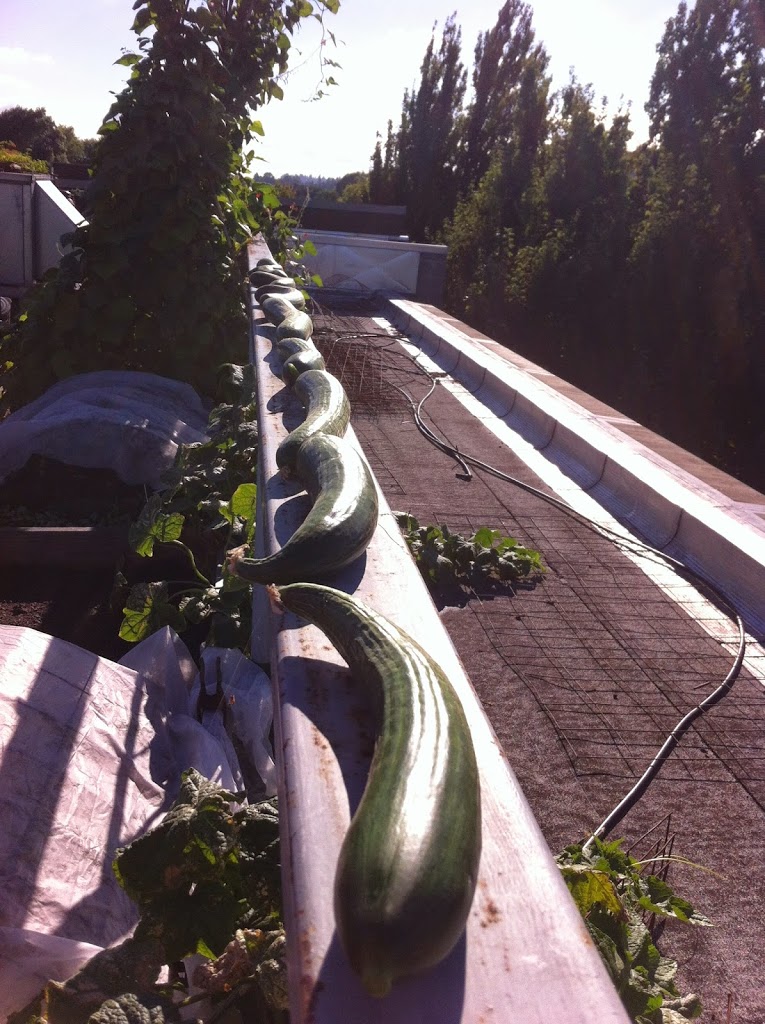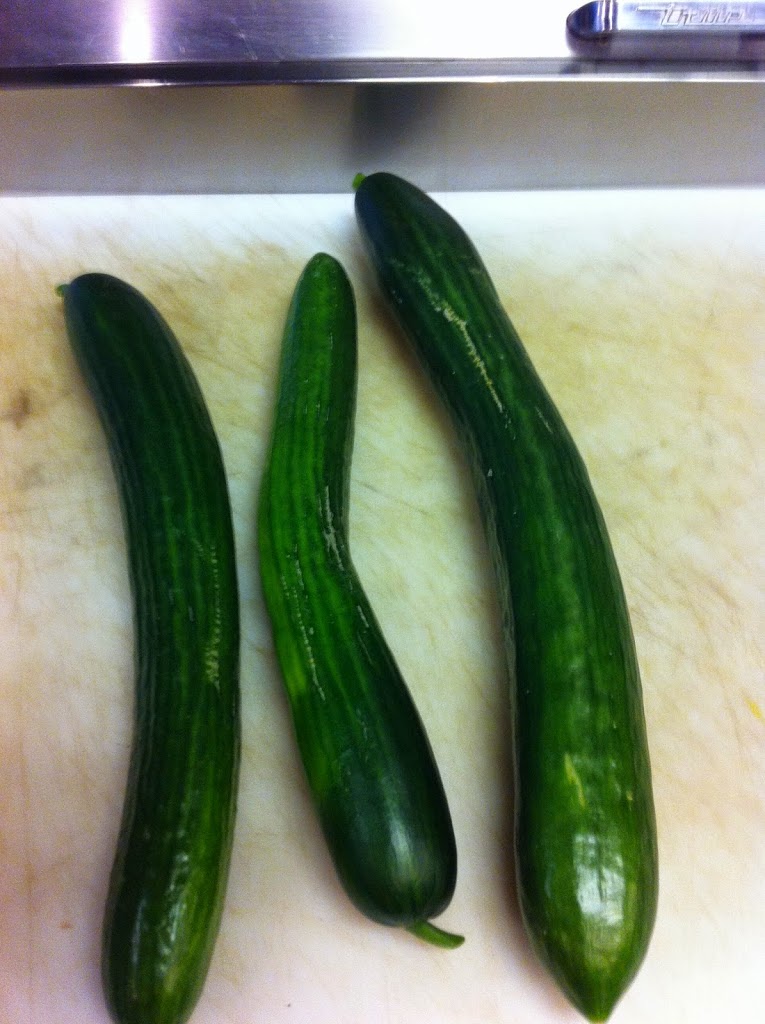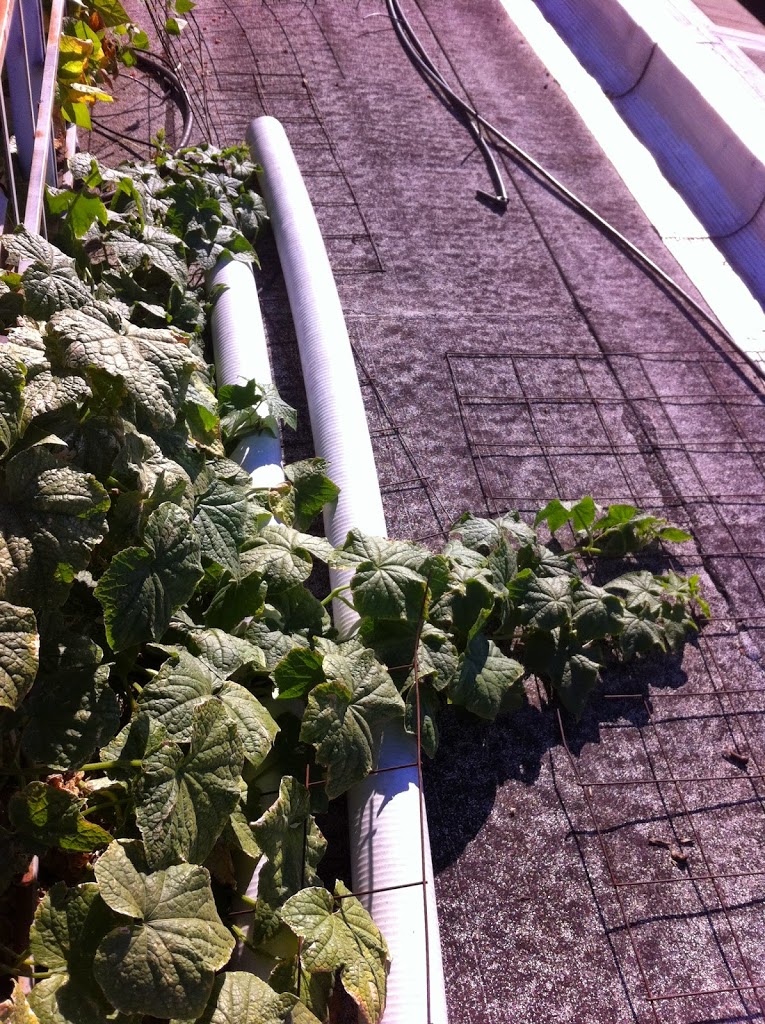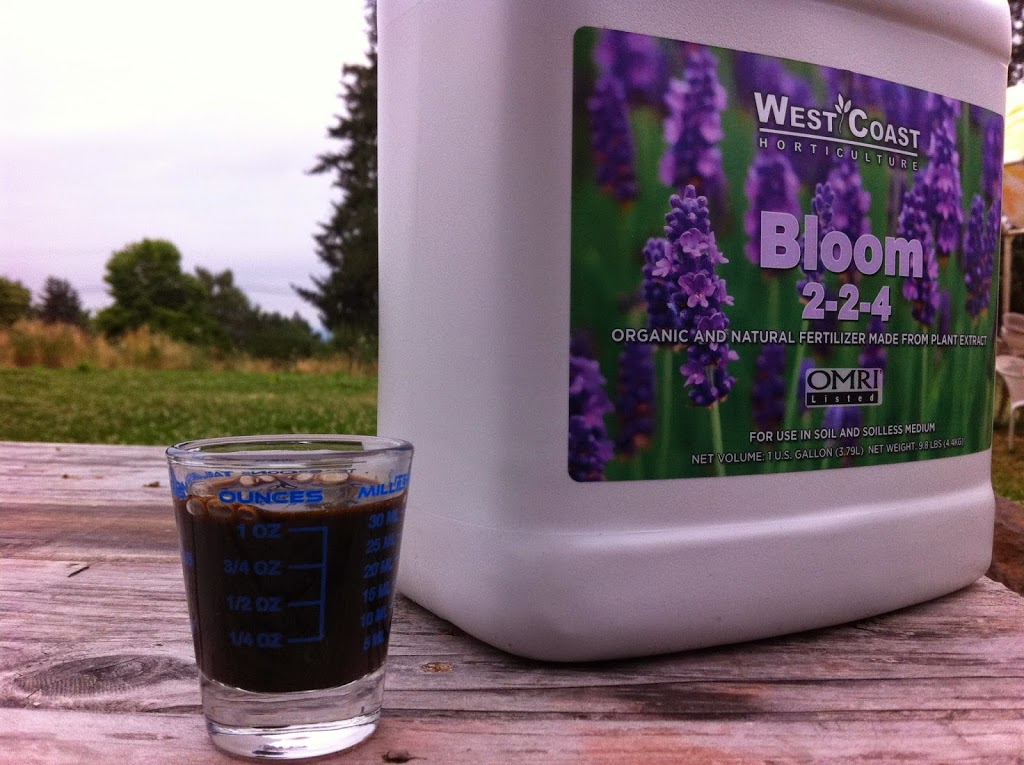 |
| Ah, what finer pleasure than a lineup of English cukes, skins glinting in the morning sunlight. |
This morning I picked some really beautiful cukes, and, folks, I am proud to say that I have discovered a second way to grow really straight cukes, you know the kind you just want to shrink wrap and bring into a grocery store and stand there in the produce section saying, nay, shouting: “You probably think that this perfect cucumber came from some nameless, placeless greenhouse where they have some special techniques to grow them this straight, but, no, it came from my garden, my garden!, and I just shrink-wrapped to make it look legit.” OK, probably you don’t want to do that if you value your reputation in the community, but it’s the depth of pride that I’m trying to capture and convey here. Back to the straightness thing. The first way is to get them off the ground, grow them on a trellis, and let gravity pull them straight. It works, and I’ve got no complaint with the method, but now I know that if you let the cuke vines ramble over a flat rooftop you can get the same result with no trellis to make, install, store, etc. For those who don’t grow cukes on rooftops, which is admittedly the majority of gardeners, a nice, flat board may achieve the same effect. The cukes probably won’t be able to tell the difference.
 |
| Where’s the shrink wrap, I wondered…but then I remembered, “Oh, wait, this is local produce so it doesn’t need to be shrink-wrapped!” |
Besides their ability to grow impressively straight, here are some other things you might find interesting about these cukes. First, of course, variety is all important. These are Pepinex… English cukes. Not all cukes are created equal. English cukes are preferred by chefs because they have thin, sweet skin and small, inconspicuous seeds. I credit my friend chef Leather Storrs with introducing me to this line of cucumbers. He insisted on them and wouldn’t hear of me growing anything else on the Noble Rot rooftop, except some lemon cukes, which have their own merits. Because their sweet, thin skin is actually prized, desired, and therefore retained (as in not peeled away), commercial growers figured out that consumers prefer them unwaxed, hence the almost universal shrink-wrapping to conserve moisture without that waxy coat. Also the thin-skin, seedless combo makes it head-and-shoulders less bitter than most other cukes.
I ordered Pepinex from Territorial seed (http://www.territorialseed.com/product/Pepinex_Cucumber_Seed/slicing_cucumber_seed).
Considering how good English cukes are, it’s surprising to me how few varieties are offered, compared with, say, pickling cukes, but given all that’s happening in the world these days, I’m not losing much sleep over the English cuke to pickling cuke ratio. At least we have Pepinex and a few other English varieties to satisfy those occasions when we value thin-skinnedness (which isn’t often in our culture).
 |
| Cuke vines ramble, perhaps even gambol (albeit slowly, as befits a cucumber), over unused rooftop surfaces. |
And here’s another cukey rooftop fun fact. These cukes, with all their rambling vines, are growing in only 6″ of soil. Rambling vines are full of rambling leaves, rambling leaves full of rambling stomata, and rambling stomata full of rambling water vapor. So, needless to say, we have to put a lot of water on these things – every day in fact, sometimes twice. Once their roots have drilled down those 6 precious soil inches, that’s it – they become utterly dependent on their gardener/waterer after that. But a rooftop veggie does not live on water alone. I give these cukes a little shot glass of high phosphorus liquid fertilizer once or twice a week (organic, please) followed by a water chaser – actually I serve it as a mixed drink. This combo keeps those long, straight, English, shrink-wrappable fruit really coming.
 |
| A shot of this will really put hair on your chest! Actually, why not mix it with some water and give it to your cukes. They’ll tolerate it much better than you will! |
